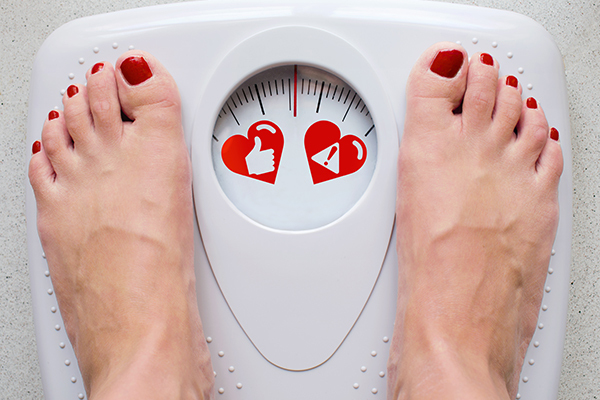In this article:
Obesity goes beyond what is generally considered as being chubby. It is a much more complex condition that affects every aspect of your physical health and therefore requires a more extensive and multidimensional treatment approach.

Obesity is typically the result of consuming more calories than your body can exhaust on a regular basis. The extra calories get stored in the body as fat, which amounts to significant weight gain over time. These excess fat deposits can hamper the functioning of your organs and make way for chronic ailments.
What Is BMI and Why Is It Important?
Body mass index (BMI) is the measure of your body fat according to your height and weight. It is a way to determine if you have a healthy weight according to your height.
Here’s how you can calculate your BMI:
- Use this formula to calculate your BMI: BMI = (Weight in pounds / (Height in inches × Height in inches)) × 703 OR BMI = (Weight in kilograms / (Height in meters × Height in meters))
- Use the US National Institutes of Health’s online BMI calculator.
A BMI of 18.5–24.9 is generally considered ideal. A BMI of 25.5–29.9 is overweight, and a BMI above 30 is obese.
Weight Classification
People are categorized as underweight, normal, overweight, obese, and severely obese based on their BMI.
1. Underweight
A BMI lower than 18.5 is considered underweight. If you are underweight, it is vital that you consult a doctor for advice on weight gain since being underweight can negatively impact your health.
2. Normal or healthy weight
The healthy or normal weight range is represented by a BMI falling between 18.5 and 24.9. However, this reference range is not applicable to pregnant or breastfeeding women.
3. Overweight
A BMI that falls between 25.0 and 29.9 is overweight. The extra weight can quickly tire you out, reduce your efficiency, make you susceptible to various chronic ailments such as diabetes and heart problems, and pave the way for obesity over time.
4. Obesity
Obesity is determined by a BMI range of 30.0–39.9. Not only does obesity worsen your existing medical problems, but it can also pave the way for new and more serious ones in the future. Consult your doctor regarding treatment options.
5. Severe obesity
Severe or morbid obesity is characterized by a BMI of 40.0 or above. People who are morbidly obese can exceed their normal body weight by as much as 100 pounds. This condition can be fatal if not treated properly and requires immediate medical attention.
How Common Is Obesity?
Obesity is extremely rampant in the United States, where it affects nearly 40% of the population. Apart from adult obesity, cases of obesity in children have also drastically increased in the last 50 years.
Reports of 2015–2016 studies indicated that nearly one-fifth of the young adult population aged between 6 and 19 years is struggling with obesity. (1)(2)
This rapid growth of obesity among the younger generations should motivate people to address the issue more seriously. Obesity can result from a wide range of causes.
Symptoms of Obesity
People with obesity are at a higher risk of developing other medical conditions, which come with their own set of symptoms and complications. Obesity does not develop alone but is accompanied by a host of other discomforts, which include:
- Shortness of breath
- Snoring
- Excessive sweating
- Lack of sleep
- Fatigue
- Difficulty in performing any impromptu physical activity
- Body aches such as backaches and painful joints
- Potbelly
Treatment for Obesity
Obesity can be overcome through a combination of medication, surgery, weight loss tools along with proper, dietary control and lifestyle changes. The commonly used medical interventions for fighting obesity include:

1. Medicines
Anti-obesity drugs are popular noninvasive treatment options that cut down excessive body fat to relieve pressure on your bones and improve your metabolic health. Weight-loss medicines work in the following ways:
- Curb your appetite and thereby reduce your overall food intake
- Restrict fat uptake by the body cells and inhibit fat accumulation
These drugs may be available as over-the-counter pills or be prescribed to you by your doctor. However, they are not substitutes for exercise and healthy eating but a complementary aid to speed up weight loss.
Note: Anti-obesity drugs are not safe to take during pregnancy. In any case, always consult your doctor for proper dosage and to rule out potential side effects of these medications.
2. Bariatric/obesity surgery
Bariatric surgery is recommended for people who are struggling with morbid obesity along with other serious conditions such as type 2 diabetes and hypertension and are unable to lose weight through exercise and diet changes.
These surgical procedures reduce the stomach size and lower its food holding capacity, which further impedes absorption. The results are early satiety and delayed hunger levels post-surgery.
Bariatric surgery is considered to be a secure, effective, and well-tested treatment option for obesity. However, not all types of obesity can be treated through this.
3. Weight loss devices
The use of weight-loss devices has been recently included as one of the treatment approaches for obesity. It is a non-surgical and temporary mode of treatment where certain gadgets are used to reduce weight.
Some common weight-loss devices are:
- Electrical stimulation system: This device can change the nerve signals to the brain and make you feel full more quickly.
- Gastric balloon system: A balloon-shaped device is filled with a saline solution and is placed inside the stomach. It reduces your hunger significantly.
- Gastric emptying system: This device pushes the stomach contents in the duodenum.
Note: Weight loss devices have not been extensively tested for their safety and efficacy. Consult your doctor before using them.
Diagnosing Obesity
BMI calculation using the BMI-for-age formula is the foremost diagnostic procedure to determine obesity in both children and adults.
The level of fat content in the body can be an indicator of obesity. It can be calculated using any of the following methods:
- Calculating waist circumference
- Calculating waist to hip circumference
- Skinfold measurement for assessing the amount of subcutaneous fat
- Determining the concentration of body fat through ultrasound
Obesity can become a risk factor for several distressing health conditions. Therefore, your doctor may suggest additional diagnostic exams to test for concurrent health disorders such as diabetes and to determine the concentration of triglycerides and LDL cholesterol in the blood.
Complications of Obesity
Obesity is not just about being overweight. Its associated health risks make it a serious global health issue as it can further lead to:
- Hypertension, cardiovascular disorders, stroke, etc.
- Cancers, including colorectal, breast, gallbladder, and endometrial cancers
- Diabetes mellitus type 2
- Pulmonary disorders including sleep apnea
- Arthritis
- Liver and gallbladder disorders
- High cholesterol levels
- Musculoskeletal impairments
- Metabolic syndrome
- Kidney stones (3)
- Psychological issues
When to See a Doctor
The early stages of obesity may be controlled through a proper and healthy routine. However, if your problem worsens and is turning unmanageable, you should get professional help.
Expert Answers (Q&A)
Answered by Dr. Gabriel Okpagu, MD, MBA (Family Physician)

Many medical conditions can lead to obesity. Hypothyroidism is one condition that can lead to weight gain as a result of decreased metabolism.
Obesity can be considered an epidemic, most notably in the United States. Obesity increases the risk of developing cancer, heart disease, diabetes, and many more chronic diseases. (4)(5)
Obesity can be a secondary result of stress and depression. Some patients suffering from an increased level of stress or depression may indulge in overeating. This, over time, can lead to weight gain or obesity.
The ketogenic diet has become increasingly popular for weight loss, provided it is sustained for an extended period. However, there have been no reliable studies to assess their long-term ramifications.
The goals for weight loss in obese individuals are:
• Reduction of starchy carbs (pasta, white bread, potatoes, white rice)
• Reduction of sugary foods, drinks, etc.
• Reduction of saturated fats
• Inclusion of high-fiber foods
• Inclusion of sources of omega-3 fatty acids (including avocados, fruits such as pears, green vegetables, flaxseed, and fish oil)
Childhood obesity can be due to the consumption of excessive calories, genetic predisposition, or an underlying medical condition.
Childhood obesity is a serious issue and should be taken seriously, given the early exposure to risks of developing conditions mentioned above.
Studies have shown a genetic predisposition to obesity, which suggests some individuals are more prone to obesity than others. (6)
Obesity is measured as a BMI equal to or greater than 30. Overweight is a BMI between 25 and 29.9.
Being overweight can increase the risk of developing diabetes if necessary dietary and lifestyle modifications are not made.
Obesity, in the majority of my patients, can be attributed to their lifestyle. Exercise recommendations include at least 150 minutes of moderate-intensity exercise per week. In terms of diet, reducing carb intake can further potentiate weight loss.
The general daily caloric intake is approximately 2,500 calories. However, many factors may lead to certain variations of this recommendation. I recommend making gradual changes to the diet that is sustainable in the long run.
Eliminating sodas, juices, sugary snacks, and starchy carbs such as potatoes, pasta, and white rice and replacing these with foods such as quinoa, wheat bread, vegetable pasta, and brown rice can be beneficial.
Final Word
Although obesity is a serious medical condition, the good thing is that it can be cured. Healthy food and a regular fitness routine can help you to lose excess body fat progressively and can improve the metabolic activity of different organs. (7)
A 2016 research revealed that even a 5% decrease in body weight could significantly lower the risk of cardiovascular disorders, diabetes, cancer, hypertension, etc. (8)

- Was this article helpful?
- YES, THANKS!NOT REALLY


